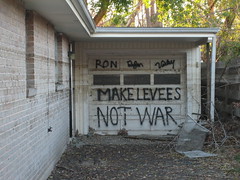3 Unbelieveable Engineering Disasters
Posted by James on October 25, 2010 · Leave a Comment
3 Unbelieveable Engineering Disasters
As impressive as some our modern inventions may seem, there is always a chance for our designs to fail. To err is human, as the old adage states. Major endeavors, such as the design and construction of a new building, rely on the collective knowledge of hundreds of individuals. Having said that, the success of any project will depend greatly on the weakest link in the chain of knowledge. This is precisely the reason mechanical engineering jobs are in such high demand. The following is a collection of the three worst engineering failures in the modern era.
Space Shuttle Challenger Disaster
On January 28, 1986, the Space Shuttle Challenger disintegrated off the coast of Florida causing the deaths of its seven crew members. It is believed that an O-ring seal on the right solid rocket booster failed, causing a breach in the joint and allowing hot, pressurized gas from within the rocket motor to escape. This led to the structural failure of the external tank and precipitated, with the assistance of aerodynamic forces, the complete breakup of the vehicle. The failure of the O-rings was attributed to a faulty design by the Rogers Commission.
Chernobyl Nuclear Meltdown
On April 26, 1986, the world witnessed the worst nuclear power plant disaster in history at the Chernobyl Nuclear Power Plant in the Ukraine. The resulting explosion(s) resulted in the release of significant amounts of radiation into the atmosphere, producing over 400X more fallout than the bombing of Hiroshima. While human error may have played a role in the disaster, flaws in the design of the control rods are thought to have been the root cause of the accident. The authorities remain largely unsure of the effects of the radiation exposure, and the area is still heavily contaminated over 20 later.
New Orleans Levee System
In August of 2005, a series of hurricanes hammered the areas in and around New Orleans, Louisiana. It is believed that there were over 50 individual failures in the levee systems and flood walls intended to protect the city of New Orleans. These levee failures contributed to the flooding of over 85% of the city, with some areas under ten feet of water or more. In 2006, the U.S Army Corps of Engineers, in testimony before the U.S Senate Subcommittee on Energy and Water, conceded that there were “problems with the design of the structure”. New Orleans, Louisiana remains a disaster zone to this day.
Brandon Weber likes to tinker with things in his workshop when he’s not busy helping his clients solve complex engineering problems. To explore the latest mechanical engineering jobs or learn more about engineering in general, join the conversation at Engineering dot com.


